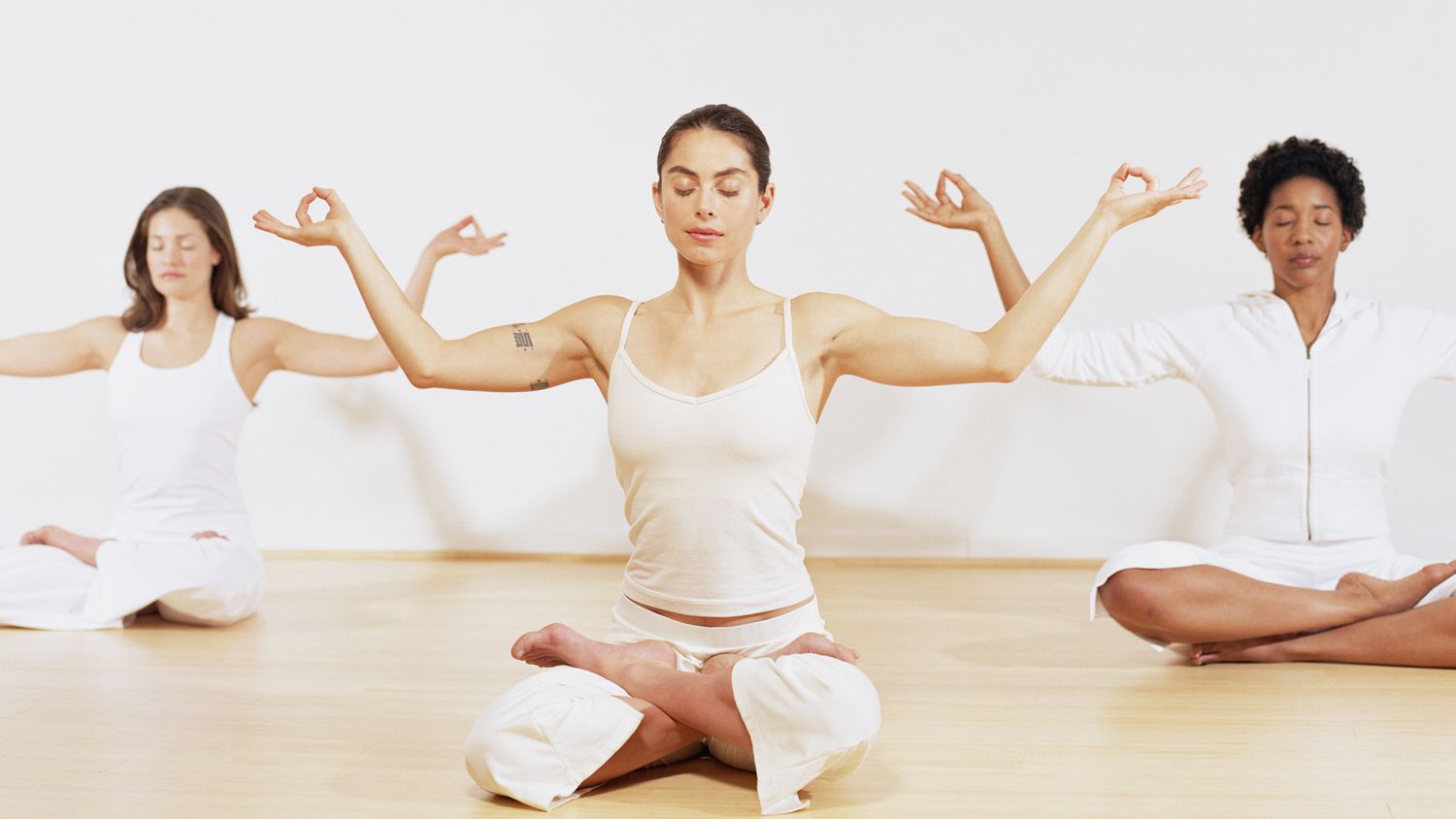Many studies show that meditation can improve your mental state, reduce stress, and promote calmness. It can also help you recognize and accept negative feelings and increase your attention span and creativity. It also can help you cultivate positive traits and attitudes, like love for yourself, compassion, forgiveness, and tolerance. Thoughts is especially effective when combined with other practices that keep you grounded in the present.
Various studies have shown that meditation therapy can help treat mental health issues, including anxiety disorders and PTSD. Meditation also reduces feelings of self-blame and enhances brain activity in the organizational system. In addition, the therapy is also effective for people suffering from anxiety and addiction.
To practice meditation, you must find a quiet place and sit comfortably. Then, you must sit or lie in a posture that allows you to pay attention to your breathing and the sensations you experience. During your practice, your teacher will probably tell you to let your thoughts come and not to resist them.
Meditation is a process that draws your attention away from the external world and helps you develop personal change. Focused attention allows you to experience less suffering and develop greater self-understanding. Meditation is similar to psychotherapy and had studied in religious and secular traditions. In addition, many forms of meditation associated with Buddhism and modern secular versions refer to mindfulness meditation or relaxation response training.
Therapy of Meditation: Transcendental meditation
Transcendental meditation is a therapy of meditation that has proved to improve health and reduce stress. It can help people with addictions, autism spectrum disorders, and post-traumatic stress disorder. Other benefits include improving memory and increasing feelings of well-being. It is also a great way to relax.
During a transcendental meditation session, you silently repeat a mantra for about 15 minutes. To get the most out of practice, choosing a quiet room with no distractions is advisable. You may also want to turn off your phone or put it on silent mode. If you have family members around, ensure they are not distracting you while meditating. You should also sit comfortably and close your eyes for a few seconds. Then, start breathing deeply.
Therapy of Meditation: Dialectical behavior

Dialectical behaviour is a therapy of meditation that helps clients tolerate negative emotions and learn to control them. It uses cognitive behavioural principles to help patients learn to regulate their emotions without engaging in harmful behaviours. This therapy can often treat patients with complex emotional disorders like borderline personality disorder and depression. It involves the use of meditation and mindfulness techniques.
This therapy will base on the dialectical logic philosophy, which posits three basic views of reality. According to Linehan, reality is not static; it is a dynamic system that changes in response to its thesis and antithesis.
Therapy of Meditation:
Mindfulness-based stress reduction (MBSR)
MBSR is a therapy of meditation that is an effective way to reduce stress and anxiety. It involves training people to be more aware of their thoughts and emotions. Practising seated and walking meditation helps people become more aware of their thoughts and feelings and become calmer in stressful situations. Although MBSR initially focused on people with chronic health issues, it has since become a widely taught technique for many people.
Studies of MBSR have shown that it can improve health outcomes for cancer patients. The study found that MBSR enhanced patient quality of life and reduced anxiety levels. Furthermore, MBSR can improve the quality of sleep in cancer patients. This program will also show to be effective in reducing the symptoms of osteosarcoma. Although research on MBSR is sparse, some studies suggest that it can help people suffering from chronic illnesses or depression.
Therapy of Meditation:
Mindfulness-based cognitive therapy (MBCT)
Mindfulness-based cognitive therapy (MBCT) aims to help people manage negative thoughts and feelings by developing a more positive relationship with themselves. Practising mindfulness teaches patients to be calm and centred on the moment. Through this practice, harsh self-criticism keep replaced by compassion and acceptance.
Therapy of Meditation with delivered as a structured group program, with individual goals set by a therapist. Although it is not a cure for a disease, MBCT has been used to treat chronic illnesses and improve the quality of life for patients. In addition to treating mood disorders, MBCT can help those suffering from physical conditions. While it is not a substitute for medicine, it proved to help individuals improve their quality of life and cope with stress.

Therapy of Meditation:
Mindfulness-based somatic therapy
Mindfulness-based bodily therapy or MBST is a therapy of meditation that integrates mindfulness practices with yoga, somatic reiki, and other healing modalities. The therapy focuses on body-based interventions and helps clients release body-stored trauma. This practice also promotes emotional resilience and self-efficacy.
This therapy can help people suffering from various mental and physical conditions. It teaches patients how to manage and self-regulate their physiological symptoms, building resilience. The techniques are based on the psychophysiological trauma recovery model and trained in an experiential format.
What Psychology Says About therapy of Meditation?
Several studies have shown that meditation helps people control negative emotions. One study examined the brain activity of 15 participants who had never meditated and twelve who had practised for over twenty years. It showed that the participants who meditated had a lower emotional response to scenes of anger. While meditation is not a cure-all for negative emotions, it can help people with anxiety.
The therapy of meditation will show to improve attention and memory. A recent study found that meditation training significantly improved verbal reasoning on the GRE, a test that requires verbal reasoning. This improvement was equivalent to 16 percentile points. And the benefits of meditation are not limited to the brain. People can learn meditation techniques at any age.
Meditation can increase focus, reduce stress, and improve overall psychological well-being. It can also help people recognize and accept negative emotions. In addition, it can help people stay in the present. This practice can be especially beneficial when combined with other mindfulness practices. For instance, if a person practices meditation with other people, they are more likely to learn and understand their emotions.

What Do the Fingers Mean in therapy of Meditation?
The fingers of your hand have different meanings in the therapy of meditation. For example, your thumb and middle finger touch the sky. They represent patience and courage. Your ring finger, on the other hand, represents change and intuition. The tips of all the other fingers can point upwards. Each finger uses meditation for a different purpose, and it may be helpful to learn about the various mudras before practising them.
Abhaya mudra
In Sanskrit, Abhaya mudra means “fearlessness,” a hand gesture often practised during meditation. When practised correctly, the Abhaya mudra is a symbol of peace. It can be seen on statues of Burmese and Thai Buddhas and is a famous hand gesture to help you relax and feel secure.
The Abhaya mudra is a hand posture that uses the fingers in meditation to help you become more centred and more aware of the universe. To practice the Abhaya mudra correctly, you must be in a proper meditation position. They include breathing profoundly and visualizing the universe. Then, you will interlock your fingers in a circle. Your thumb and forefinger press together while your index and middle finger go straight up through the centre.
The Abhaya mudra has roots in Hinduism and predates Buddhism. The Hindu yogis used this mudra to develop concentration and healing powers. One of the most popular poses in the Buddhist world will often see on statues of Buddha and other Buddhist saints.

Manidhara mudra
The Manidhara mudra is a popular hand position for meditation. It is a gesture that signifies total balance and total surrender to the cosmos. The right hand can use to represent wisdom, and the left hand represents the illusion of existence. This mudra will derive from the Sanskrit word dhyana, which means “meditation.” It is a preliminary step to samadhi, the ultimate state of enlightenment.
The Manidhara mudra can improve communication, mental clarity, intuition, and sensitivity. They are also used to purify the mind and emotions. They do this by placing the middle fingertip on the tip of the thumb. The other three fingers should be straight. Maintaining the correct posture when performing this mudra is essential for optimal results.
A variation of the Manidhara mudra is the Dainichi Nyorai. The two hand sections join together to form a circle. This gesture is associated with the historical Buddha and is often performed by the meditator while sitting in a seated position.
Vitarka mudra
The Vitarka mudra in meditation is a hand position that represents the joining of the essential duality between the masculine and feminine of the universe. It can perform by placing the right hand at shoulder level. The index finger and thumb should be touching the three other fingers. The left hand should rest on the lap. They can also use the media to represent the energy body.
Practising the Vitarka mudra in meditation will enhance your ability to receive and absorb essential teachings. During meditation, the fingertip of the index finger should touch the thumb while the remaining fingers remain straight. The mudras are commonly used in yoga and meditation to open chakras and control energy flow throughout the body. There are many mudras, but this is one of the most common.
Mudras are specific hand positions used in meditation to draw the mind inward. They channel energy into particular body areas and can operate in various meditative practices. Although mudras may involve different body parts, most focus on the hands. The word mudra in Sanskrit means “gesture,” “seal,” or “mark.” Buddhist, Jainist, and Hindu cultures have used these hand signs for thousands of years to help them achieve mental clarity, meditative discipline, and inner peace.










